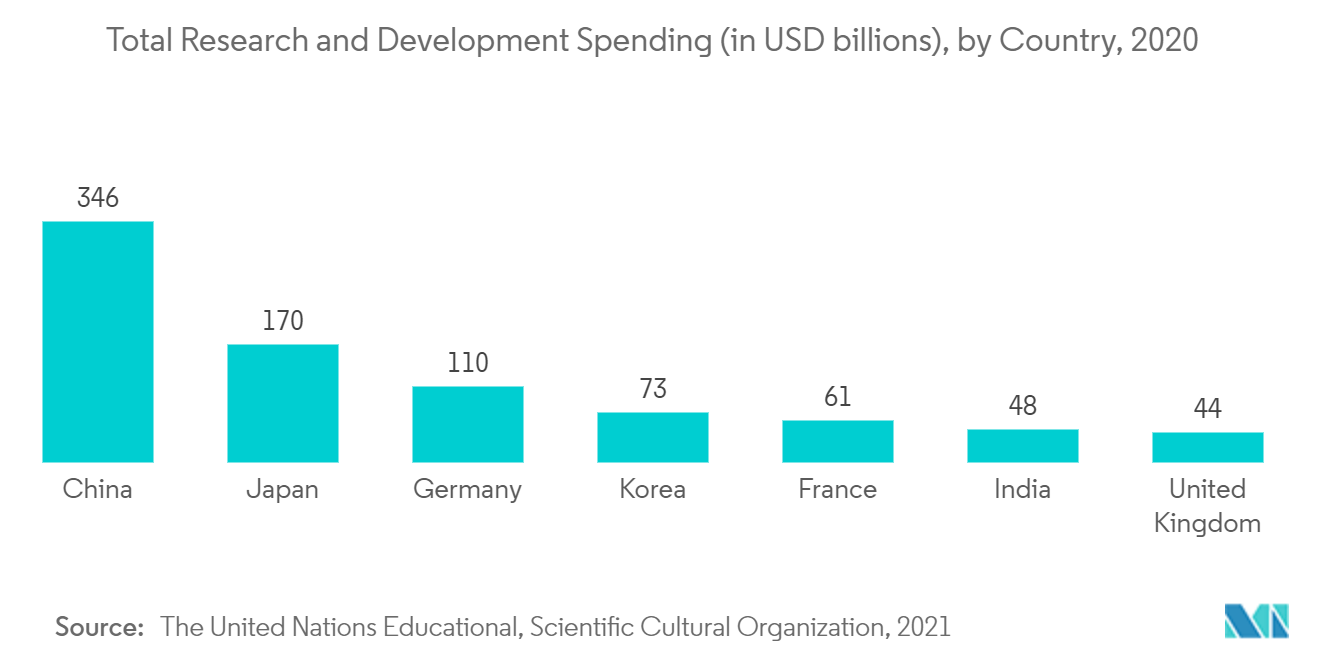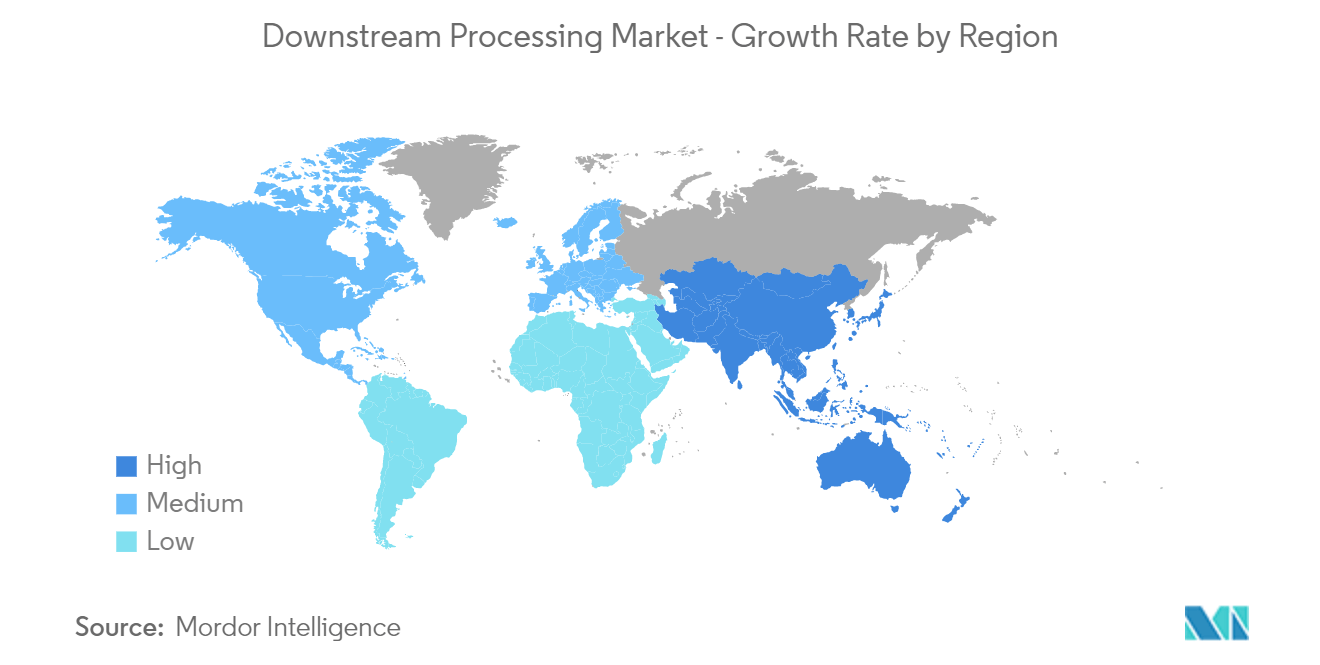Market Trends of Global Downstream Processing Industry
Antibodies Production is Expected to Dominate the Downstream Processing Market During the Forecast Period
The antibodies segment is expected to witness significant growth in the downstream processing market over the forecast period owing to the factors such as rising demand for antibiotics for the treatment of several disorders, and growing demand for monoclonal antibodies. For instance, according to an article published in August 2022, titled 'Recent Advances and Future Directions in Downstream Processing of Therapeutic Antibodies', continuous and semi-continuous downstream processes are being investigated as alternatives to batch processes due to the increased adoption of perfusion methods for antibody production. In addition, the development of downstream processes is increasingly using statistical and mechanistic modeling techniques, which allows for a deeper knowledge of chromatographic unit activities.
In addition, antibiotic resistance is on the rise, which increases the demand for developing antibodies that act against resistant strains. This is expected to increase the adoption of downstream processing in antibody production, thereby fueling market growth.
Furthermore, the rising company activities for developing products for efficient purification of antibodies are also contributing to the market growth. For instance, in January 2021, Cytiva launched HiScreen Fibro PrismA for early monoclonal antibody (mAb) purification process development. The Fibro technology uses an open porous adsorbent material made of cellulose fibers for efficient mass transfer. The Fibro technology enables rapid cycling chromatography which accelerates research and process development and boosts output in large-scale manufacturing.
Thus, owing to the aforementioned factors, the market is expected to grow significantly during the forecast period.

North America Dominates the Market and Expects to do Same Over the Forecast Period
North America is expected to hold a significant market share in the downstream processing market owing to the factors such as the increasing adoption of downstream bioprocessing in antibodies production in the industry, rising government initiatives in promoting bioprocess technologies, and the presence of a well-established healthcare infrastructure.
The rising government funding and investment for advancing the manufacturing process in biopharmaceutical industries are also contributing to market growth. For instance, in July 2021, the National Institute for Innovation in Manufacturing Biopharmaceuticals (NIIMBP) received two grants totaling USD 153 million from the National Institute of Standards and Technology (NIST) of the United States Department of Commerce. Also, as part of the American Rescue Plan, the National Institute of Standards and Technology (NIST) gives NIIMBL USD 83 million over three years to assist in research and development aimed at halting, preparing for, and responding to coronavirus epidemics.
The rising company activities and increasing focus on adopting various business strategies such as a merger, acquisition, and expansion of the facility to withhold their position in the market are also contributing to the market growth. For instance, in April 2022, Merck entered into an agreement with Wuxi National High-tech Industrial Development Zone. Under the agreement, Merck expands its single-use manufacturing center in Wuxi, East China's Jiangsu province. Also, in March 2022, Thermo Fisher Scientific Inc., invested USD 97 million to expand its clinical research operations in Richmond, Virginia. The facilities support increasing demand across biopharma for consistent, high-quality laboratory services to accelerate drug development. Similarly, in April 2021, Thermo Fisher Scientific launched the HyPeak chromatography system, a single-use chromatography system for bioprocessing, with significant functions in therapeutic protein as well as vaccine development.
Thus, owing to the aforementioned factors, the market is expected to grow significantly during the forecast period.


